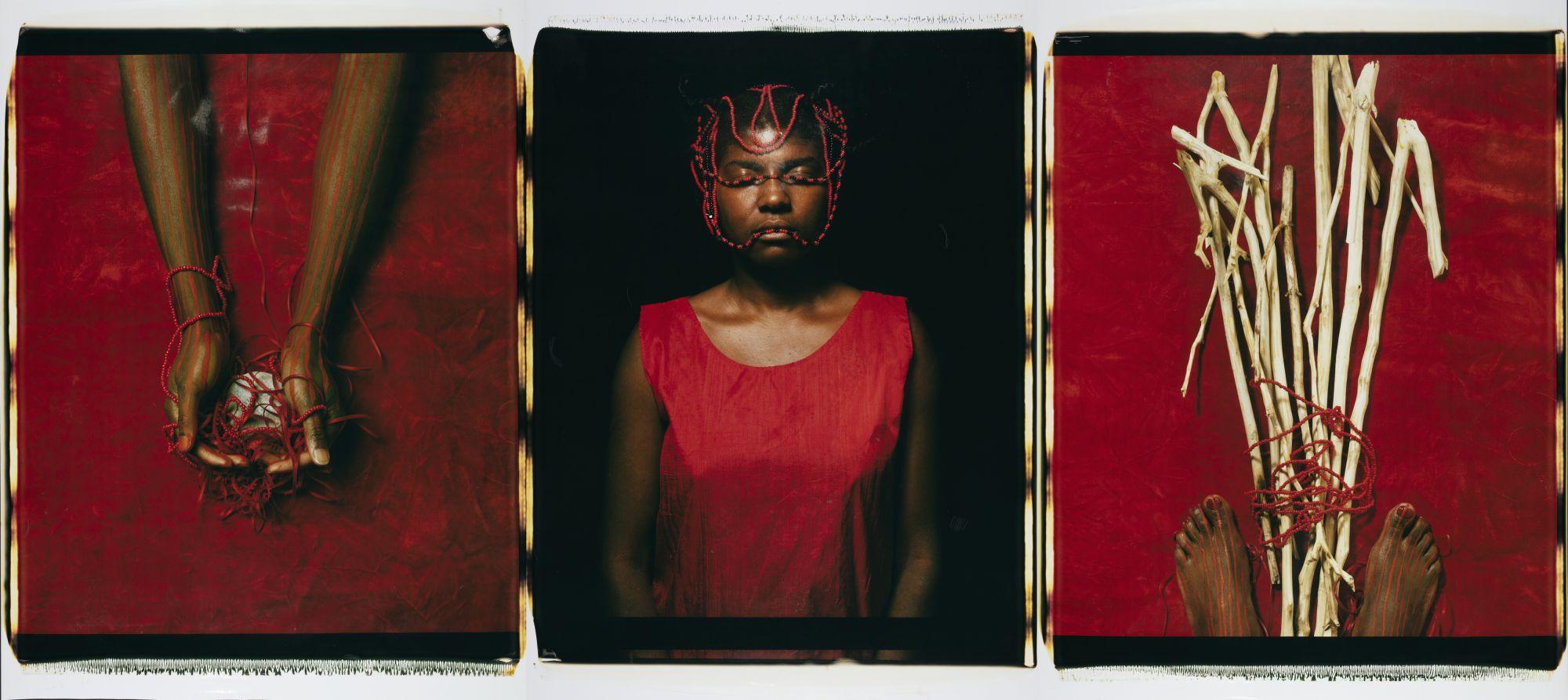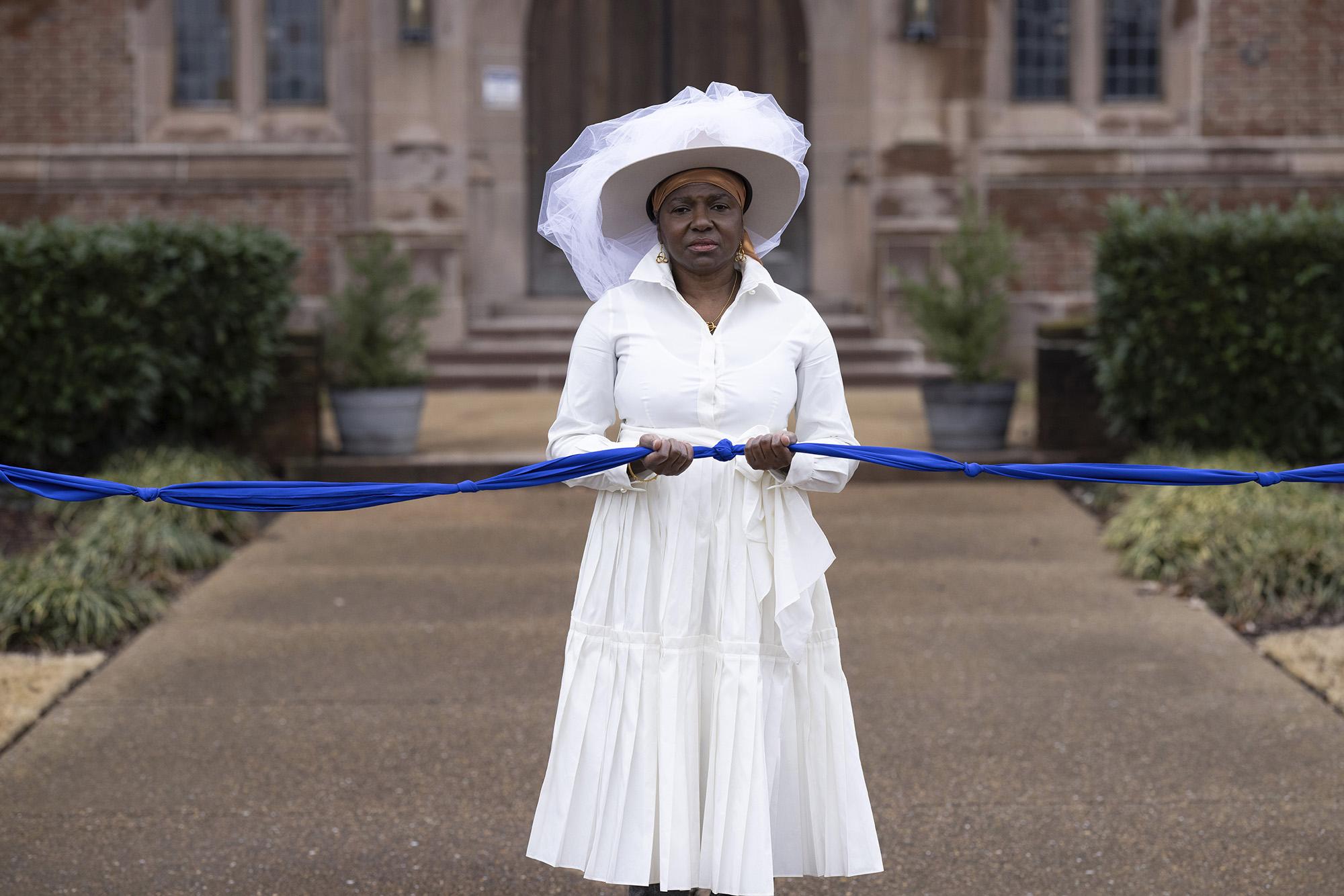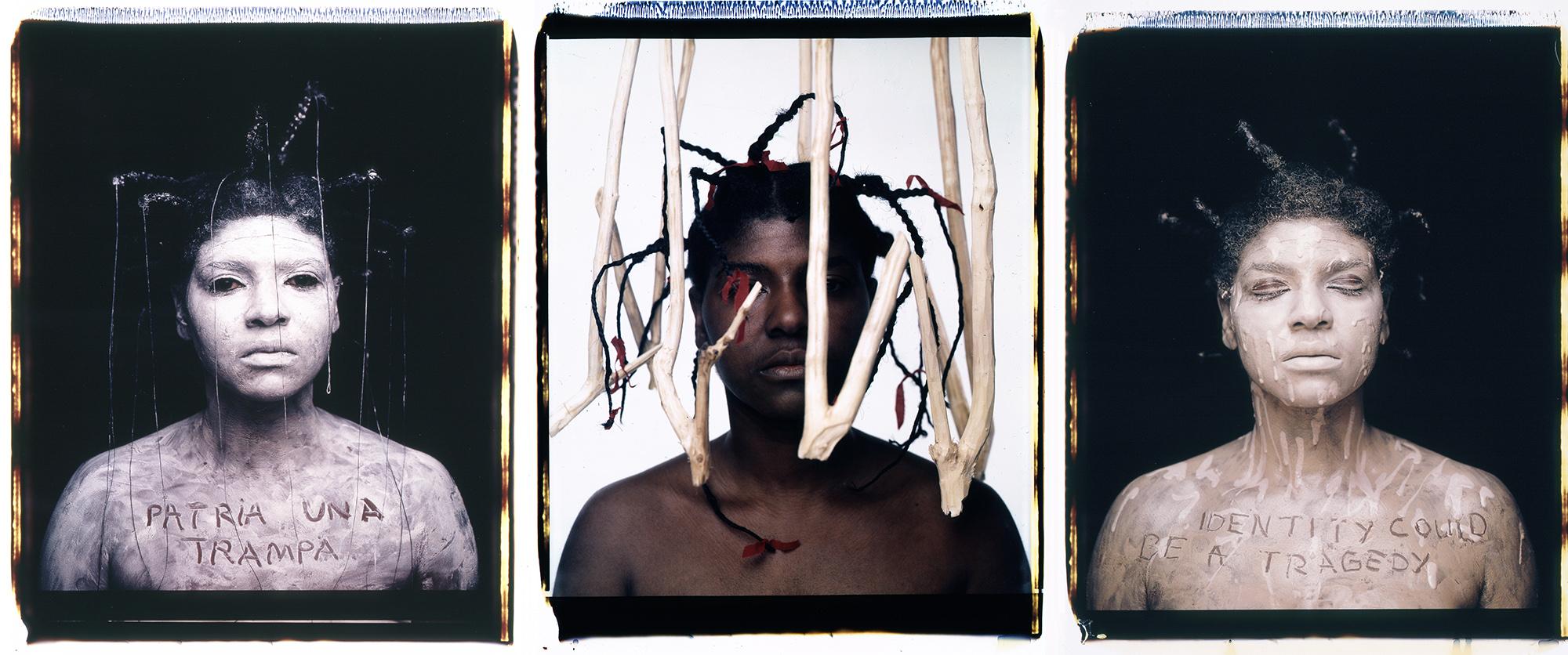Events
News
The Brooklyn Museum Presents María Magdalena Campos - Pons: Behold , the Artist’s First Museum Survey in New York
visura blog
Jan 18, 2024
Encompassing nearly four decades of her multimedia art practice, the exhibition kicks off a national tour, which presents the artist’s explorations of migration, diaspora, and memory that draw on feminism, photoconceptualism, and Yoruba-derived Santería symbolism.
On View September 15, 2023–January 14, 2024
Through tactile and layered works that span photography, immersive installation, video, painting, and performance, Behold presents a selection of the four-decade career of María Magdalena Campos-Pons. In this sweeping, multisensory survey, the artist engages with her performance-based practice and works with communities in Cuba, Boston, and Nashville, her current residence, to explore complex narratives rooted in interconnected histories, identities, and realities. The presentation features more than forty artworks, bringing together significant career highlights and new work, along with a multimedia series on view for the first time in the United States.
The artist has been included in major exhibitions worldwide, including the Sharjah Biennial (2023), Documenta 14 (2017), Venice Biennale (2013, 2001), Havana Biennial (2012, 2019,1991, 1989), the Guangzhou Triennial (2008), her traveling mid-career survey everything Is Separated by Water(2007), the Dak’Art Biennial in Dakar (2004), and more, as well as numerous university and college museum presentations, speaking to her influence as an educator, thinker, and experimental artist. The exhibition will be accompanied by a publication designed by Morcos Key, documenting the span of Campos-Pons’s career, with essays by Carmen Hermo, Mazie Harris, Jenée-DariaStrand, Phillip Townsend, and Selene Wendt, as well as an introduction by the artist and cultural theorist Amalia Mesa-Bains.
Campos-Pons has often foreseen broader cultural shifts through her work, evidenced by her deep explorations of labor and motherhood, the connected histories of enslavement, the power and fragility of nature, and Santería spirituality, ritual, and tradition. She considers the legacies of enslavement and the ongoing exploitation of Afro-descendent people, especially women, and migrants in Matanzas (Cuba), Boston, Nashville, and Padua (Italy), and how such realities encompass the artist’s own family story.
Behold differentiates between the camera’s voyeuristic ability to objectify its subject and how Campos-Pons uses the medium to witness a careful act of beholding. Theexhibition’s title evokes associations of touch, support, and dignity, as the artist beholds and upholds myriad stories, experiences, and communities.“It’s a delight to showcase this survey of Campos-Pons’s artwork. Her work is conceptually rigorous, avant-garde, wondrous, and beautiful. It embraces traditions and ways of being that preceded and survived the violence of colonialism, and it will appeal to viewers seeking decolonial narratives and inspiration from an artist who affirms that empathy and emotion are critical tools,” says Carmen Hermo, Associate Curator, Elizabeth A. Sackler Center for Feminist Art, Brooklyn Museum.
Born in Matanzas, Cuba, in 1959, the year Fidel Castro came to power, Campos-Ponsgrew up during a time of experimentation and artistic freedom in post-Revolution Cuba.
In response to the harshening political climate, the artist moved to the United States in 1991 and was unable to return to Cuba for many years. Her artwork hasoftenvisualizedthe difficulties of being in multiple places at once: working and living in one place while being emotionally tethered to another, striving throughout for connection across distance. Campos-Pons’s family story intertwines global histories of enslavement, indentured and domestic labor, and advocacy for bodily autonomy. Her artwork centers on these histories, including her West African Yoruba ancestors’ forced enslavement in the nineteenth-century sugar industry in Cuba and her Chinese ancestors’ work as indentured servants in nearby sugar mills.
Campos-Pons’s calling as an artist coalesced with the emergence of the feminist language of intersectionality, a framework first introduced by Black feminist scholars and thinkers in the late 1980s. She foregrounded the inseparability of race, gender, and sexuality in her representations of the women in her family, considering spiritual practice, labor, and migration as modes of interpreting loss and connection. Some of Campos-Pons’s most important and recognizable works are featured in Behold, includingSpokenSoftly with Mama(1998, co-created with Neil Leonard). This immersive video installation honors the lives and creative potential of the women in her family who worked in domestic labor and pays tribute to them with a Santería altar-like video installation.
Several examples from her influential large-scale Polaroid series, When I Am NotHere/Estoy Allá(1994–97), expose the falsehood and divisiveness of nationalist identity and connect the body instead to water, and to an expansive set of histories. In De Las Dos Aguas (Of the Two Waters) (2007), a multipart Polaroid work, the artist uses self-portraiture to evoke the powerful Yoruba deities, Yemayá and Oshun, as divine protectors of migrants.
The exhibition also includes rarely seen work such as umbilical cord (1991), a photographic installation of bellies painted with footprints and outstretched arms, created when Campos-Pons left Cuba, in collaboration with her mother and sisters, and Baño Sagrado (Rite of Initiation, Sacred Bath)(1991, co-created with Neil Leonard), a fitting autobiographical video that poetically speaks to the artist’s-distance from her family and how she reconnects with Cuba in her practice via Santeríaand oral traditions.
Works on view for the first time in the United States include the 2006 series Qui, which links the Nigerian immigrant community in Italy today to the long history of Black people’s presence in the country, dating back to the 1400s. Featured highlights from the series are El Nacimiento de la Flor de Cardi(2006), a two-dimensional work portraying a seemingly pregnant belly adorned with delicately painted uteruses and fragments of crochet work by Italian nuns, that gives forth a thriving thistle plant, andMadonnaPellegrina–La Viajera(2006), a multimedia installation that documents the artist’s daily walks while living in Padua, Italy. Additionally, several collage works from the series Weather, Captiva(2016), made while Campos-Pons was at the Rauschenberg Residency on Captiva Island, Florida, are inspired by the detritus washed up on the island’s shores. Using scraps of metal from Rauschenberg’s studio, the artist created abstract, collage-like compositions in Catch of the Day #1, Pájaro de Atenas, and La Irade Chango & Zeus.
Currently based in Nashville, Campos-Pons sheltered in place in her studio during the COVID-19 pandemic. It was during this period that she made Miasma (2020), a series of intimately scaled watercolor paintings that contemplate contagion and connection.
Simultaneously, she worked on the Rise of the Butterflies(2021), a series echoing the eyespots of butterfly wings, which function in nature to ward off predators. The work memorializes Breonna Taylor, who was killed in 2020 in her own home by Louisville police officers. In paintings combining watercolor, photography, and vibrant blown-glass mobiles, Campos-Pons protects Black women amid lush, large flowers, all-seeing butterfly eyespots, and abstracted eyes, allowing visitors to see and honor the urgency and power of beholding.
In honor of the exhibition’s opening, the Museum will hold a daylong symposium during the opening weekend. The program will begin with poetry by performance artist PamelaSneed; followed by a keynote conversation with renowned art historian Cheryl Finley; two roundtables reflecting on the artist’s practice in relation to lineage and ancestry and to mentorship and legacy (moderated by art historians Adriana Zavala and Nikki A.Greene); and a culminating new processional performance by the artist, which will lead participants from the symposium into the exhibition.
María Magdalena Campos-Pons: Beholdis organized by the Brooklyn Museum and the J. Paul Getty Museum. It is curated by Carmen Hermo, Associate Curator, Elizabeth A.Sackler Center for Feminist Art, Brooklyn Museum, and Mazie Harris, Assistant Curator of Photographs, J. Paul Getty Museum, with Jenée-Daria Strand, former CuratorialAssociate, Elizabeth A. Sackler Center for Feminist Art, Brooklyn Museum. The exhibition begins a national tour that includes the Nasher Museum of Art at Duke University, Durham, North Carolina; the Frist Art Museum, Nashville, Tennessee; and the J. Paul Getty Museum at the Getty Center, Los Angeles, California.
Generous support is provided by Debbie and Mitchell Rechler, Jodi and Hal Hess, and the Elizabeth A. Sackler Museum Educational Trust.
__Center_1997_crop2.jpg) María Magdalena Campos-Pons: Behold
María Magdalena Campos-Pons: BeholdThe Brooklyn Museum is an art museum located in the New York City borough of Brooklyn. At 560,000 square feet, the museum is New York City's second largest in physical size and holds an art collection with roughly 1.5 million works.
Brooklynmuseum.org




